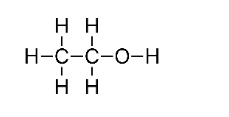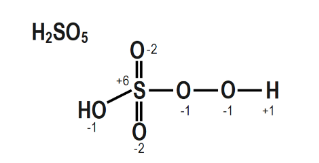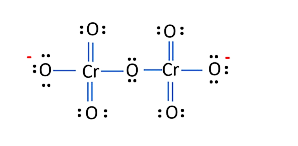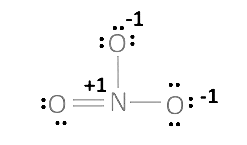Class 11 Redox reaction NCERT solutions FREE PDF download
FAQs on NCERT Solutions for Class 11 Chemistry Chapter 7 Redox Reaction
1. What Topics and Subtopics Are There in the class 11 chemistry ch 7 NCERT solutions Redox Reaction?
The Class 11 Chemistry Redox Reaction chapter is an essential chapter of the Class 11 syllabus. The chapter has high importance in the board exams as well as in the JEE and NEET examinations. So, the students must have adequate knowledge in this chapter. The important topics and sub-topics are given below:
1. Classical Idea of Redox Reactions- Oxidation and Reduction reactions
2. Redox reactions in terms of the Electron Transfer reactions
Competitive Electron Transfer reactions
3. Oxidation Number
Types of Redox reactions
Balancing of Redox reactions
Redox reactions as the basis for titrations
Limitations of the concept of the Oxidation Number
4. Redox reactions and the Electrode process
2. What Can a Student Learn from the Redox Reactions class 11 NCERT solutions?
When a student will go through Class 11 Chemistry Redox Reaction, he/she will understand what is a Redox Reaction. Redox reaction is defined as the class of reactions where oxidation and reduction coincide. Students will also learn the meaning of oxidation, oxidizing agent, reduction and reducing agent. With the help of the knowledge of this chapter, students will be able to classify the Redox Reactions into:
Combination Reaction
Decomposition Reaction
Displacement Reaction
Disproportional Reaction
Students will also learn how to balance the chemical equations using the oxidation number and half-reaction process. If you have a fair practice and understanding, you can score good marks in the examinations. Download class 11 redox reaction NCERT solutions now.
3. What is an Oxidation number and Redox reaction?
In order to make a chemical bond, an atom loses or gains electrons. The total number of electrons lost or gained is known as oxidation number. The Redox process is an oxidation-reduction chemical reaction in which the oxidation states of the reactants change. To study more about these topics, students can refer to the vedantu app.
4. What are the main topics covered in class 11 chemistry ch 7 NCERT solutions?
The main topics covered in NCERT Solutions for Class 11 Chemistry Chapter 8 are:
Redox Reactions
Reduction process
Oxidation process
Types of Redox Reactions
Class 11 Chemistry students can prepare for the examination and revise with the help of the material given on vedantu website (vedantu.com). The solutions are in line with the syllabus prescribed by CBSE guidelines. The solutions here include detailed and comprehensive answers to every exercise question provided in the NCERT Class 11 Chemistry textbook.
5. Why is class 11 chemistry redox reaction NCERT solutions important?
Merely NCERT questions make up 99 percent of the CBSE board exam papers. CBSE occasionally gives twisted questions that are based on the same premise as NCERT. The key to getting a high score is to understand your concepts rather than memorise them. To achieve the highest possible score, one must practise extensively. At the end of each chapter, NCERT books include a variety of questions. Vedantu offers NCERT Solutions for Class 11 Chemistry Chapter 8 for all the questions free of cost.
6. How is Vedantu useful for class 11 chemistry chapter 7 NCERT solutions?
Vedantu provides high-quality PDFs for Chapter 8 of Chemistry Class 11. These solutions are available online, and you can also download the Solutions PDF to study offline. The best thing is that you can get the NCERT Solutions for Class 11 Chemistry Chapter 8 for free. All of the problems in Chapter 8 of Chemistry for Class 11 are solved and explained clearly. This way, if you get stuck on a problem, you'll be able to resort to these resources. They are based on the latest CBSE guidelines and exam pattern.
7. Is Class 11 ch 7 chemistry class 11 NCERT solutions difficult?
It really isn't simple, however, it is not impossible. You can accomplish anything if you have the will to do so. All you need to do now is clarify your thoughts, and you'll be ready for any exam. Vedantu helps you understand each and every concept of class 11 chemistry redox reaction NCERT solutions will help you get an in-depth understanding of topics and prepare for exams. Experts have developed the answers, which are given in a very clear and precise manner. Download class 11 chemistry chapter 7 exercise solutions for better understanding.
8. How to add electrons in redox reactions?
To add electrons in redox reactions, use the half-reaction method: balance atoms and charges separately, then combine. Electrons are added to the side with higher charge, ensuring charge balance.Redox reaction Class 11 NCERT solutions Access comprehensive solutions for Class 11 redox reactions in NCERT textbooks, ensuring thorough understanding and mastery.
9. What always happens during a redox reaction?
During a redox reaction, electron transfer occurs between reactants, altering oxidation states. This process leads to changes in the composition and properties of substances involved. Get detailed solutions specifically tailored for class 11 chemistry chapter 7 NCERT solutions guidelines, facilitating effective learning and exam preparation.
10. What factors affect redox reactions?
Various factors influence redox reactions, including temperature, concentration, catalysts, and the nature of reactants and products. These factors can accelerate or hinder the reaction rates and determine the overall outcome. Explore meticulously crafted class 11 chemistry redox reaction exercise solutions, aiding students in grasping key concepts effortlessly.
11. What are the real life applications of redox reactions?
Real-life applications of redox reactions encompass various fields: in batteries for energy storage, rusting prevention in metals, water treatment, combustion engines for transportation, and even in biological processes like cellular respiration and photosynthesis. Enhance your understanding of redox reactions Download NCERT solutions of redox reaction class 11 for effective practice.
12. Why are acids used in redox reactions?
Acids are used in redox reactions for several reasons: they can donate protons (H⁺ ions) which facilitate certain reactions, they can act as catalysts or mediators, and they can provide the required acidic conditions for specific reactions to proceed efficiently.
Access Redox reaction class 11 NCERT solutions, providing step-by-step guidance to aid in understanding and application.
13. What is the principle of redox reaction?
The principle of redox reactions revolves around the transfer of electrons from one chemical species to another. This transfer leads to changes in the oxidation states of the reacting species. The species that loses electrons undergoes oxidation, while the species that gains electrons undergoes reduction. Thus, redox reactions involve simultaneous oxidation and reduction processes, maintaining overall charge neutrality.
Delve into class 11 chemistry chapter 7 exercise solutions, focusing on redox reactions, facilitating thorough comprehension.





























